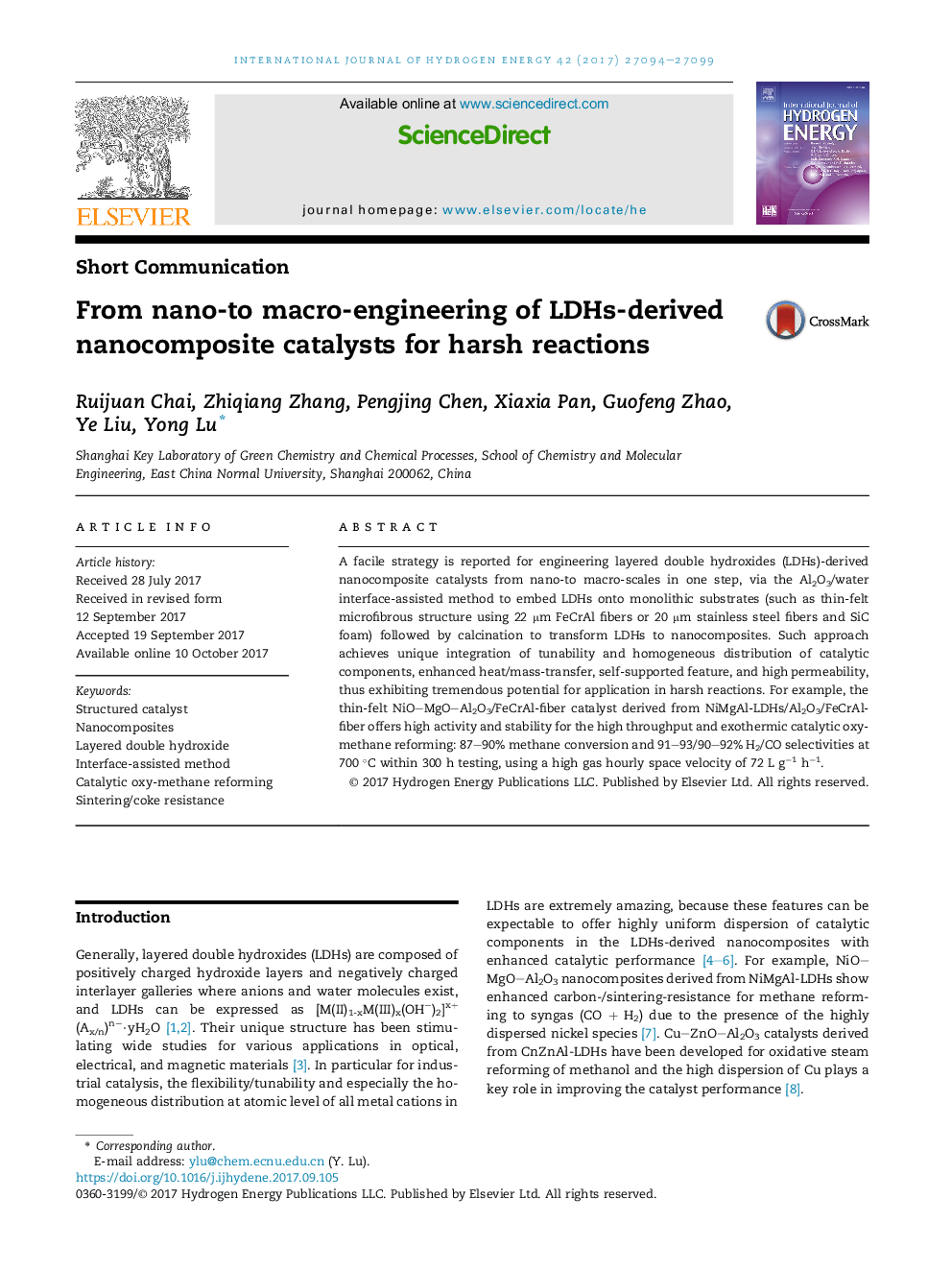| Article ID | Journal | Published Year | Pages | File Type |
|---|---|---|---|---|
| 7709574 | International Journal of Hydrogen Energy | 2017 | 6 Pages |
Abstract
A facile strategy is reported for engineering layered double hydroxides (LDHs)-derived nanocomposite catalysts from nano-to macro-scales in one step, via the Al2O3/water interface-assisted method to embed LDHs onto monolithic substrates (such as thin-felt microfibrous structure using 22 μm FeCrAl fibers or 20 μm stainless steel fibers and SiC foam) followed by calcination to transform LDHs to nanocomposites. Such approach achieves unique integration of tunability and homogeneous distribution of catalytic components, enhanced heat/mass-transfer, self-supported feature, and high permeability, thus exhibiting tremendous potential for application in harsh reactions. For example, the thin-felt NiOMgOAl2O3/FeCrAl-fiber catalyst derived from NiMgAl-LDHs/Al2O3/FeCrAl-fiber offers high activity and stability for the high throughput and exothermic catalytic oxy-methane reforming: 87-90% methane conversion and 91-93/90-92% H2/CO selectivities at 700 °C within 300 h testing, using a high gas hourly space velocity of 72 L gâ1 hâ1.
Related Topics
Physical Sciences and Engineering
Chemistry
Electrochemistry
Authors
Ruijuan Chai, Zhiqiang Zhang, Pengjing Chen, Xiaxia Pan, Guofeng Zhao, Ye Liu, Yong Lu,
